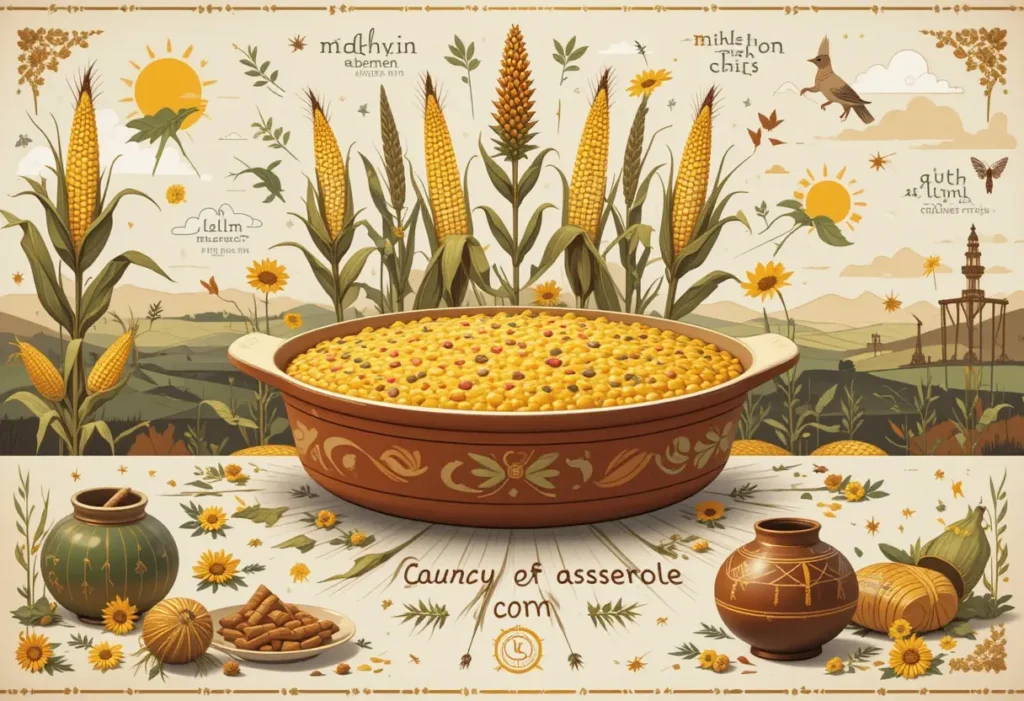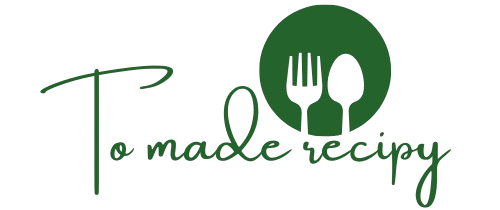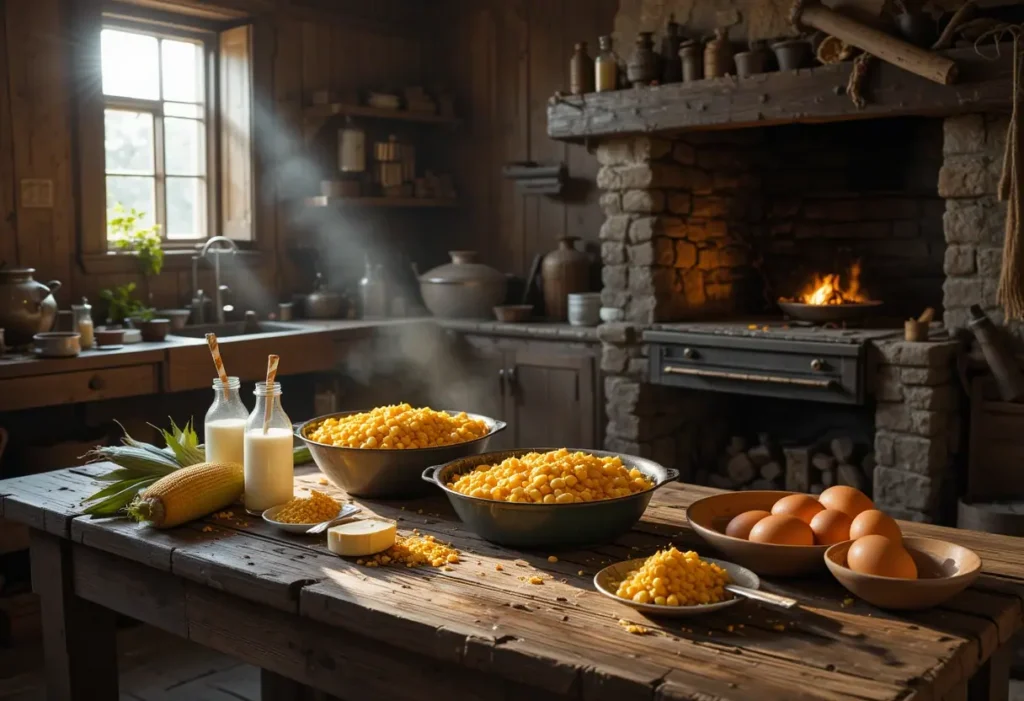A Deep Dive into Its Origins and Evolution
Corn casserole is a beloved American comfort food that has been a staple at family dinners and holiday feasts for generations. This rich, creamy dish combines corn, eggs, butter, and cornbread mix to create a flavorful side dish. But who invented corn casserole? Was it the work of a home cook, a corporate innovation, or a dish that naturally evolved over time?
The answer lies in a blend of Native American traditions, Southern cooking influences, and mid-20th-century food innovations. In this article, we’ll explore the origins, history, and cultural significance of corn casserole, how it became a staple in American cuisine, and how it continues to evolve today.
The Ancient Roots of Corn-Based Dishes
Corn has been a dietary cornerstone for centuries, particularly among Native American tribes. Indigenous peoples of North and South America cultivated corn as one of their primary crops and developed countless recipes featuring corn as the main ingredient. Some of the earliest corn-based dishes include:
- Corn Pone – A simple, dense, unleavened bread made from cornmeal and water.
- Corn Pudding – A soft, custard-like dish made by blending corn with milk or water, similar to what we now call corn casserole.
- Succotash – A dish made with corn and beans, often mixed with other vegetables for additional flavor and nutrition.
These dishes were crucial to the diet of tribes like the Cherokee, Creek, and Iroquois, who used dried and fresh corn in different ways. When European settlers arrived in the 1600s, they adopted and modified these traditional recipes, incorporating ingredients such as butter, eggs, and cream. Over time, corn pudding became a Southern classic, enjoyed in homes across the U.S.
For a traditional twist, check out Old-Fashioned Cheesy Cornbread Casserole, which blends the flavors of cornbread and corn pudding into a rich and cheesy dish.
The Evolution of Corn Casserol in American Cooking
The transition from corn pudding to corn casserol didn’t happen overnight. Instead, it was shaped by regional influences and food availability.
Colonial America and Early Adaptations
By the 18th and 19th centuries, corn had become a staple crop in the Southern and Midwestern U.S.. Wealthier households added dairy ingredients, eggs, and even sweeteners to create more refined versions of corn pudding. Meanwhile, working-class families relied on corn-based dishes for their affordability and nutritional value.

The Jiffy Revolution in the Mid-20th Century
The biggest transformation of corn casserole came in the mid-20th century with the introduction of Jiffy Corn Muffin Mix. Jiffy, a Michigan-based company, released its corn muffin mix in 1930, and by the 1950s and 1960s, home cooks were using it to create a simple, delicious variation of corn pudding.
This version—often called corn casserole—became especially popular for Thanksgiving and holiday meals because of its:
- Quick preparation – Ready in under an hour.
- Minimal ingredients – Just a handful of pantry staples.
- Comforting, familiar taste – A perfect balance of sweet and savory flavors.
For more insights into the culinary history of corn casserole, check out Who Invented Corn Casserole?.
Corn Casserole vs. Cornbread: What’s the Difference?
Many people wonder whether corn casserole is the same as cornbread. While they share similar ingredients, the texture and preparation differ:
| Feature | Cornbread | Corn Casserole |
|---|---|---|
| Texture | Firm and bread-like | Soft, creamy, and spoonable |
| Sweetness | Often slightly sweet | Can be sweet or savory |
| Ingredients | Cornmeal, flour, eggs, milk, baking powder | Corn, creamed corn, eggs, butter, cornbread mix |
| Common Additions | Jalapeños, cheese, honey | Sour cream, cheese, bacon, green chilies |
For a more detailed breakdown, read Corn Casserole vs. Cornbread.
How to Tell When Corn Casserole Is Done
One of the biggest challenges for home cooks is determining when corn casserole is fully baked. Since it has a semi-soft texture, it can be tricky to gauge doneness.
Here are a few ways to know when your corn casserole is ready:
- The top should be golden brown and slightly crispy.
- The center should be firm but still slightly jiggly when gently shaken.
- A toothpick inserted in the center should come out mostly clean, with a few moist crumbs.
For more baking tips, read How to Tell When Corn Casserole Is Done.

Storage and Preservation
Wondering how to store leftover corn casserole? Here are some quick tips:
- Refrigerate: Store in an airtight container for up to 4 days.
- Freeze: Wrap in plastic wrap and aluminum foil for up to 3 months.
- Reheat: Warm in the oven at 350°F for 15-20 minutes or microwave in short bursts.
For additional storage guidelines, check out Does Corn Casserole Need to Be Refrigerated?.
Frequently Asked Questions
1. What is the difference between corn pudding and corn casserole?
Corn pudding is smoother and custard-like, while corn casserole has a firmer, more bread-like texture.
2. Is corn casserol a Southern dish?
Yes, it is commonly associated with Southern cuisine, but its roots trace back to Native American corn-based dishes.
3. Can I make corn casserol without Jiffy?
Absolutely! You can make a homemade version by mixing cornmeal, flour, baking powder, and sugar.
4. How do I know when my corn casserol is done baking?
Refer to How to Tell When Corn Casserole Is Done for expert tips.
5. Can I store corn casserol for later?
Yes! Find the best methods in Does Corn Casserole Need to Be Refrigerated?.
Conclusion
From its Native American roots to its Southern adaptations, and finally its mid-century popularity boom with Jiffy, corn casserol has cemented its place as a timeless comfort food.
Whether you enjoy it sweet, savory, classic, or with a modern twist, corn casserole remains a staple on American tables—a testament to its delicious history and versatility.
So next time you scoop up a serving of this golden, creamy delight, remember: you’re not just enjoying a dish, but a piece of culinary history. 🍽️ssic.

